Field blewit / Summer / Autumn / Edible
Step into the realm of culinary exploration as we celebrate the remarkable Field Blewit (Lepista saeva).
Join us on a journey where delectable flavors and nature’s treasures collide. With their captivating lilac to purple caps and delicate gills, Field Blewits offer an enchanting sight in the wild.
Learn to identify their distinctive features, discover their preferred habitats, and delve into the culinary wonders they bestow. From their tender texture to their delightful earthy taste, these mushrooms hold the power to elevate your dishes to new levels of gastronomic delight. Whether you are an adventurous forager or an aspiring chef, let the Field Blewits inspire your culinary creations and awaken your taste buds to their marvelous flavors. Embrace the abundance of nature’s bounty as we celebrate the enchanting delights that lie within the Field Blewits. Get ready to embark on a flavorful journey as we explore the captivating culinary possibilities these remarkable mushrooms have to offer.
Scientific name
Lepista (clytocybe) saeva
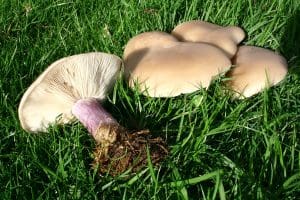
Family
Tricholomataceae
Habitat
Grasslands and sometimes in open woodland. Preferring limestone or chalk.
Description
Medium sized whitish capped mushroom, its most distinguishing feature is its purple stem.
Identifying features:
Cap:
Smooth pale buff brown to cream coloured cap that can look like it has a transparent film on the top showing the colour underneath, dome shaped when young with a slightly enrolled rim, with age it flattens and can have a wavy edge.
Stem:
4-6cm tall, that has purple striated fibres. the stem is solid and sometimes bulbous at the base.

Gills:
The gills are whitish cream becoming pinkish buff with age, free of the stem and crowded.
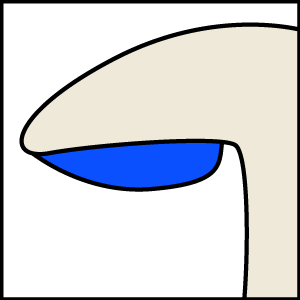
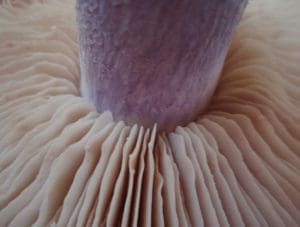
Smell:
Floral a little like earl grey tea.
Spores:
white/ pale pinkw
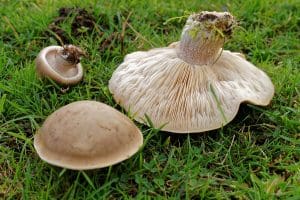
Uses
Great edible.
In Food
This mushroom is excellent fried, dried and added to soups and stews. They’ve a slightly nutty flavour.
Known Hazards
Must be cooked can cause gastric upset when raw
Potential lookalikes
Wood Blewit, but this has purple gills.
There are a number of cortinarous (web cap) mushrooms that have purple stems, webcaps have a rusty brown spore print. (Always spore print if your not sure as some of the purple webcaps can be toxic.



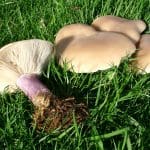

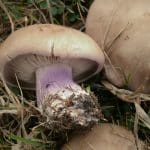
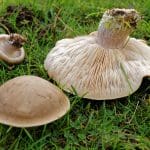
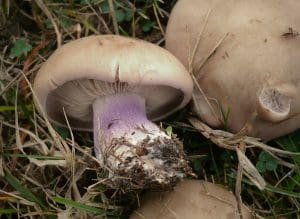



Leave a Reply
You must be logged in to post a comment.